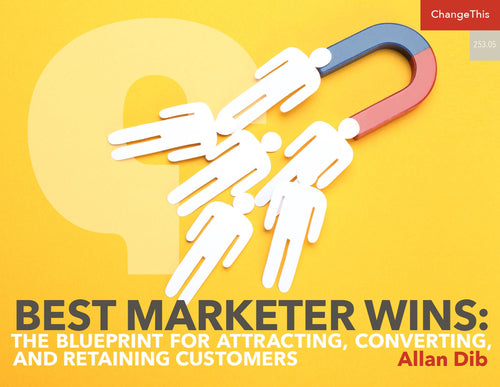Creating Value Through Continuous Improvement
Continuous improvement is often viewed as a cold, technical process. John Rizzo shows how, when done right, it is a human-centered, holistic business system for creating value and delivering superior results for all stakeholders.
Continuous improvement today is often seen as a “buzzy” phrase associated with cost-cutting and Japanese management.
Many excellent books, like Jeff Liker’s The Toyota Way and Jim Womack and Dan Jones’ Lean Thinking, have shared the core ideas in a powerful and actionable manner. And many large companies have embarked on a path with varying degrees of success and commitment. GE under Larry Culp represents a fascinating case of a global leader practicing this extensively at every corner of the organization.
Despite this progress, continuous improvement today has suffered from its success. Leading experts spend too much time feuding over whose trademarked approach has the most “authentic” lineage to Japanese sensei, while consultancies invest deeply in producing thin-sliced intellectual products as a means of luring potential clients. Most books about continuous improvement and quality focus narrowly on producing better process numbers while losing sight of vital context, such as consistently boosting quality, delivery, and service while serving loyal employees and customers.
Part of the problem is that the core practices should be easy to follow, and yet they are rarely followed consistently today. The key practices run counter to the prevailing business mindset that taps impatient capital, exploits workers, thinks only in the shortterm, and sees strategy as a tactical pursuit of temporary monopolies and captive customers. Finally, it has all too often been presented as an end, a noble quest to attain perfection without clear business outcomes.
CREATING VALUE THROUGH CONTINUOUS IMPROVEMENT
Many organizations operate with a singular focus on extracting value, maximizing short-term profits, cutting costs, offshoring and exploiting market advantages. They thrive by tapping into investment capital to secure ownership of ongoing enterprises and flipping them for profit, or by securing temporary monopolies in the marketplace, or even by leveraging technology to build a competitive “moat” bolstering their market edge. These approaches have all proven to be profitable and yet ultimately unsustainable. They have also focused solely on the bottom line above all else.
After three decades of implementing transformative change across diverse industries, I’ve discovered a more sustainable approach, one that creates lasting value for all stakeholders through a holistic business system centered on continuous improvement. This approach taps patient capital, is anchored by an authentic goal of steadily improving cash flow, and fundamentally oriented towards respecting and empowering the people who do the work.
THE JOURNEY BEGINS: SIX INCHES THAT CHANGED EVERYTHING
The journey started for me on a factory floor at Crouse-Hinds in 1993 when a machine operator suggested moving equipment just six inches to improve his workflow. When my mentor Bill Moffitt insisted on listening to the operator and making the change, despite the expense of rehiring riggers, an enduring lesson emerged that would shape careers: the importance of being present, observing the work being done, and listening to those who do it.
That seemingly minor adjustment catalyzed a transformation. The operator’s conviction that management had actually listened to him built trust that extended throughout the organization. Soon, even union representatives were suggesting improvements and volunteering for workshops. Over time, the company achieved 100 percent on-time delivery, reduced defects by 80 percent, reduced inventory by more than 50 percent, cut operating costs by 15 percent, and improved cash flow by more than $30 million.
THE HOLISTIC BUSINESS SYSTEM
A uniquely successful approach to creating value has emerged from this moment. My company has developed and refined more than 1,000 workshops across more than 50 companies in a comprehensive “holistic business system.” Unlike narrowly focused improvement methodologies, this system integrates multiple reinforcing elements:
Management Approach: Being present where work happens, observing firsthand, and genuinely listening to those doing the work.
Strategy Deployment: Aligning the organization through clear objectives and two-way communication between levels.
Value Stream Analysis: Mapping the current state of processes to identify waste and opportunities for improvement.
Fundamental Principles Supporting Delivery of Value: Implementing concepts like takt time, one-piece flow, pull systems, setup reduction, and workplace organization.
Management Systems: Sustaining gains through standard work, visual controls, and leader standard work.
This system consistently delivers extraordinary results because it addresses the entire organization as an integrated whole rather than optimizing isolated parts.
HONORING THE PEOPLE WHO DO THE WORK
The most powerful aspect of this system is its recognition that those closest to the work often possess the deepest understanding of how to improve it. By involving workers in problemsolving and decision-making, providing clear expectations and resources, and creating safe environments, organizations tap into an inexhaustible source of improvement.
When an Asian pulp and paper company implemented this approach, they discovered that imbalanced workloads were reducing productivity in tree planting operations. By consulting with the planters and rebalancing tasks, they increased productivity by 20 percent, a seemingly small change that, multiplied across 300 million trees planted annually, delivered staggering results.
Another telling example: a national mattress retailer identified more than 190 improvement opportunities through value stream analysis. One workshop discovered that delivery trucks were going out half-empty because a material handler was trying to spread work evenly among drivers. Simply reorganizing the loading process eliminated fuel surcharges and reduced delivery costs, contributing to the company’s growth from a few hundred to thousands of locations and a $5 billion valuation.
QUALITY AT THE SOURCE, NOT JUST COST CUTTING
The system fundamentally reorients organizations away from cost-cutting toward building quality into processes from the beginning. At an industrial HVAC equipment manufacturer, inspectors at the end of production lines were finding and fixing defects. By implementing quality checks throughout the assembly process and empowering workers to reject substandard work, quality issues nearly disappeared. The result: 40 percent improvement in on-time delivery, 90 percent reduction in quality issues, and 15 percent growth in sales and profits.
This principle applies across industries. At Crouse-Hinds, one out of three electrical fittings from an assembly machine had defects. By implementing quality throughout the machine process, the company virtually eliminated defects while reducing inventory by 50 percent and improving customer service to record levels.
LEARNING AS THE FOUNDATION OF IMPROVEMENT
Organizations that explicitly prioritize learning create a foundation for continuous advancement. This isn’t about classroom training but learning through direct experience and reflection and is always based on close analysis of the actual work. The workshop process itself functions as a learning laboratory, where teams try different approaches, observe what works, gather data, refine their understanding, and try again.
At a drilling tools manufacturer, lead times were reduced from eight to two weeks through a series of workshops where teams repeatedly tried, learned, and adjusted. When one setup didn’t produce the expected throughput improvements, the team didn’t view it as a failure but as valuable information that guided the next attempt.
This experiential learning approach develops problem-solvers at every level. As one leader noted: “I’ve been on this journey for over 30 years, and I learn something from every workshop.”
THE COMPOUNDING POWER OF IMPROVEMENT
Like compound interest in finance, improvement builds upon improvement in ways that produce exponential rather than linear growth. Small changes accumulate and reinforce each other across processes, departments, and time. This dynamic reinforces the power of the overall system.
At an energy industry parts manufacturer, the transformation began with seemingly minor improvements: reducing machine changeover times from 75 to 15 minutes, implementing quality checks, and creating visual management systems. These changes compounded to produce a remarkable transformation from “build to stock” to “build to order,” freeing $15 million in capital, achieving 99 percent on-time fulfillment, and driving 12 percent annual revenue growth. Over five years, the company went from losing money to a 14 percent net profit margin, nearly triple the industry average.
THE SYSTEM WORKS EVERYWHERE
This approach isn’t limited to manufacturing. It has transformed healthcare, insurance, retail, property management, services and countless other industries. A regional hospital reduced emergency room waiting times by three hours by rethinking patient flow. A medical staffing company increased profits by 50 percent, reduced employee turnover by 24 percent, and accelerated receivables by 29 percent. A property management company reduced apartment turnover time from 30 days to 3-4 days, generating hundreds of thousands in additional annual revenue. A laboratory animal science department dramatically improved quality of care while making technicians’ jobs easier.
LEADING A GLOBAL TRANSFORMATION
At a global holding company with eight diverse business units, this system was implemented across operations in the US, Canada, and Mexico. Over five years, more than 400 workshops addressed more than 500 improvement opportunities identified through value stream analysis.
The results speak volumes: enterprise value increased 500 percent, productivity (sales per total labor cost) improved nearly 200 percent, inventory turns doubled (freeing $45 million in capital), and injury frequency declined 60 percent. At one business unit, gross margin improved 20 percent (adding $25 million to EBITDA), sales surged 80 percent, and safety incidents dropped 88 percent, all while maintaining near 100 percent on-time delivery.
Perhaps most telling was external validation: the company received Toyota’s Supplier of the Year award multiple times, recognizing world-class performance in quality, delivery, service, and cost.
RESHORING MANUFACTURING: A COMPETITIVE ADVANTAGE FOR AMERICAN INDUSTRY
As manufacturing returns to the United States after decades of offshoring, this holistic business system offers a powerful competitive framework. Companies that moved production overseas primarily to chase lower labor costs often discovered that the promised savings were offset by quality issues, extended lead times, intellectual property risks, and complicated logistics.
The experience at a men’s suit manufacturer demonstrates how American manufacturing can thrive through boosting operational excellence rather than simply competing on labor costs. By implementing one-piece flow and rethinking traditional manufacturing approaches, the company reduced lead times from eight weeks to seven days while improving quality. This allowed them to produce custom-fitted suits without the quality compromises and delivery delays that characterized overseas production. Today, that company continues to flourish in an industry where many predicted American manufacturing couldn’t compete.
Similarly, a textile manufacturer that implemented a holistic business system achieved a 48 percent increase in revenue and profits by improving quality, customer service, and productivity. Rather than competing solely on labor costs, they competed on responsiveness, quality, and innovation—advantages that stemmed directly from their operational excellence.
This approach creates a virtuous cycle for reshoring: as companies implement holistic business systems, they reduce waste, improve quality, and shorten lead times. These improvements justify the labor costs while delivering superior value to customers. Proximity to markets allows for faster response to changes in demand and eliminates the coordination challenges of global supply chains.
Perhaps most importantly, this system creates meaningful, well-paying jobs that engage workers’ minds as well as their hands. Rather than viewing labor as a cost to be minimized, organizations see their workforce as a source of competitive advantage and continuous improvement. This holistic approach represents not just a strategy for successful reshoring, but a blueprint for revitalizing American manufacturing through creating value rather than simply extracting it.
THE CHOICE BEFORE US
Organizations today face a clear choice: continue down the path of value extraction with its short-term gains and long-term decline, or embrace a holistic approach to creating value that delivers superior results for all stakeholders. They can reject the false choice between profit and purpose and replace it with something bolder: a human-centered, modern definition of value that is all too rare among leading companies today. They can prove that aligning employee empowerment, customer loyalty, and shareholder return isn’t idealistic; it’s pragmatic. Trust and transparency can become true competitive advantages—not just buzzy slogans in a mission statement.
The evidence is overwhelming. Companies that implement this system consistently outperform their competitors, especially over extended periods. They weather economic downturns more effectively, retain talent more successfully, and create more sustainable value for employees, customers, shareholders, and society.
The journey begins with a simple commitment: to be present where work happens, observe with open eyes, and truly listen to those who do the work. From this foundation flows a cascade of improvements that, like those six inches at Crouse-Hinds, compound into transformation that creates lasting value for all.
Adapted from Creating Value. Copyright © 2025 by John Wiley & Sons. All rights reserved.
About the Authors
JOHN RIZZO has led transformational change at companies including Basin Holdings, Talus Holdings, Crouse-Hinds, and McQuay International, creating billions in value across manufacturing, healthcare, retail, and nonprofit sectors. Through working with 1,000+ teams at 50+ organizations he has proven that sustainable success comes from being present where work happens, listening to those who do it, and developing people at all levels. His approach, refined through learning from Toyota and continuous improvement pioneers demonstrates that engaging frontline workers creates value that top-down management cannot match.
TOM EHRENFELD is a freelance journalist and editorial consultant whose books include The Gold Mine, Lead With Respect, Managing to Learn, and The Lean Strategy. Eleven books that he has edited have won the Shingo Award for Editorial Excellence.












































